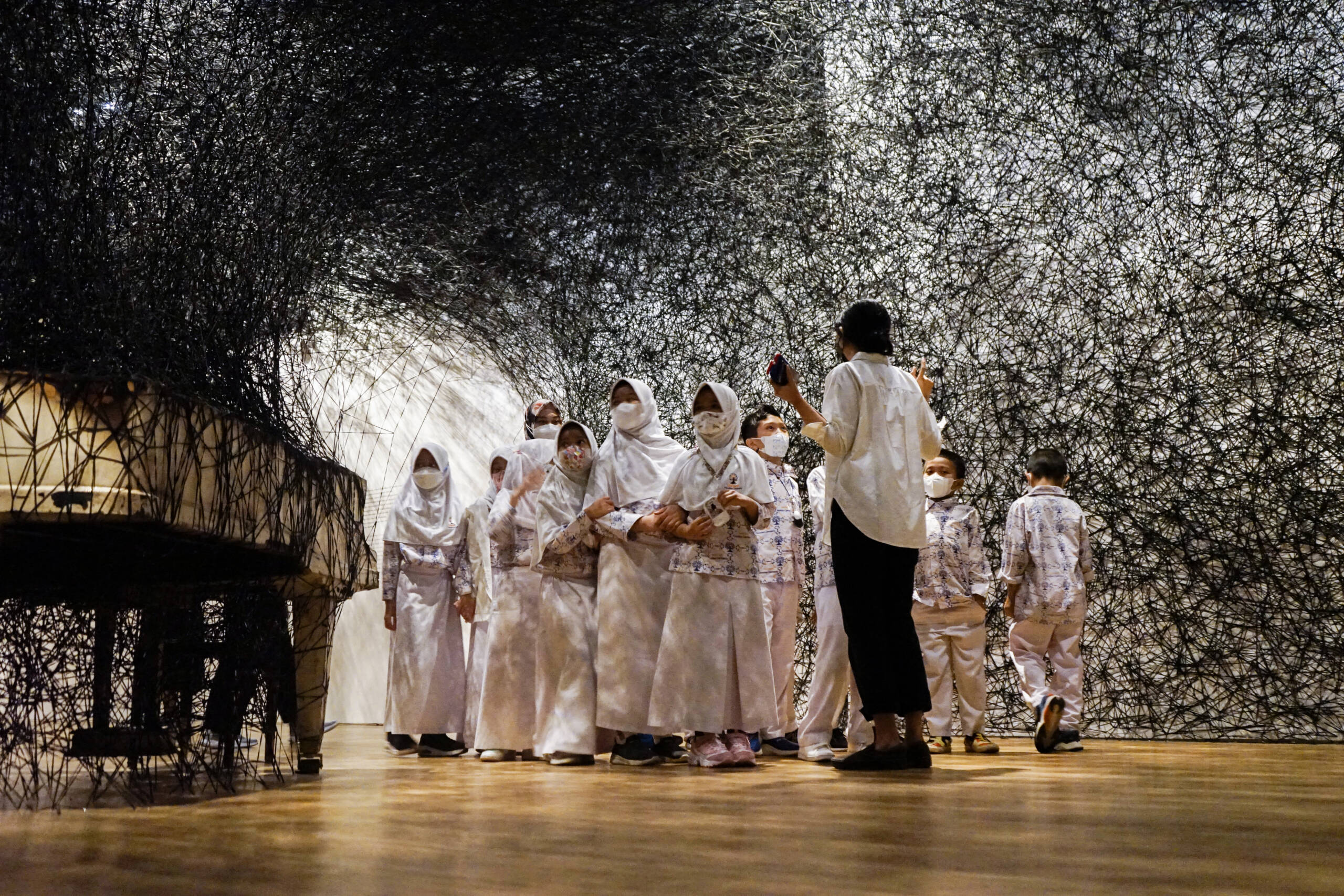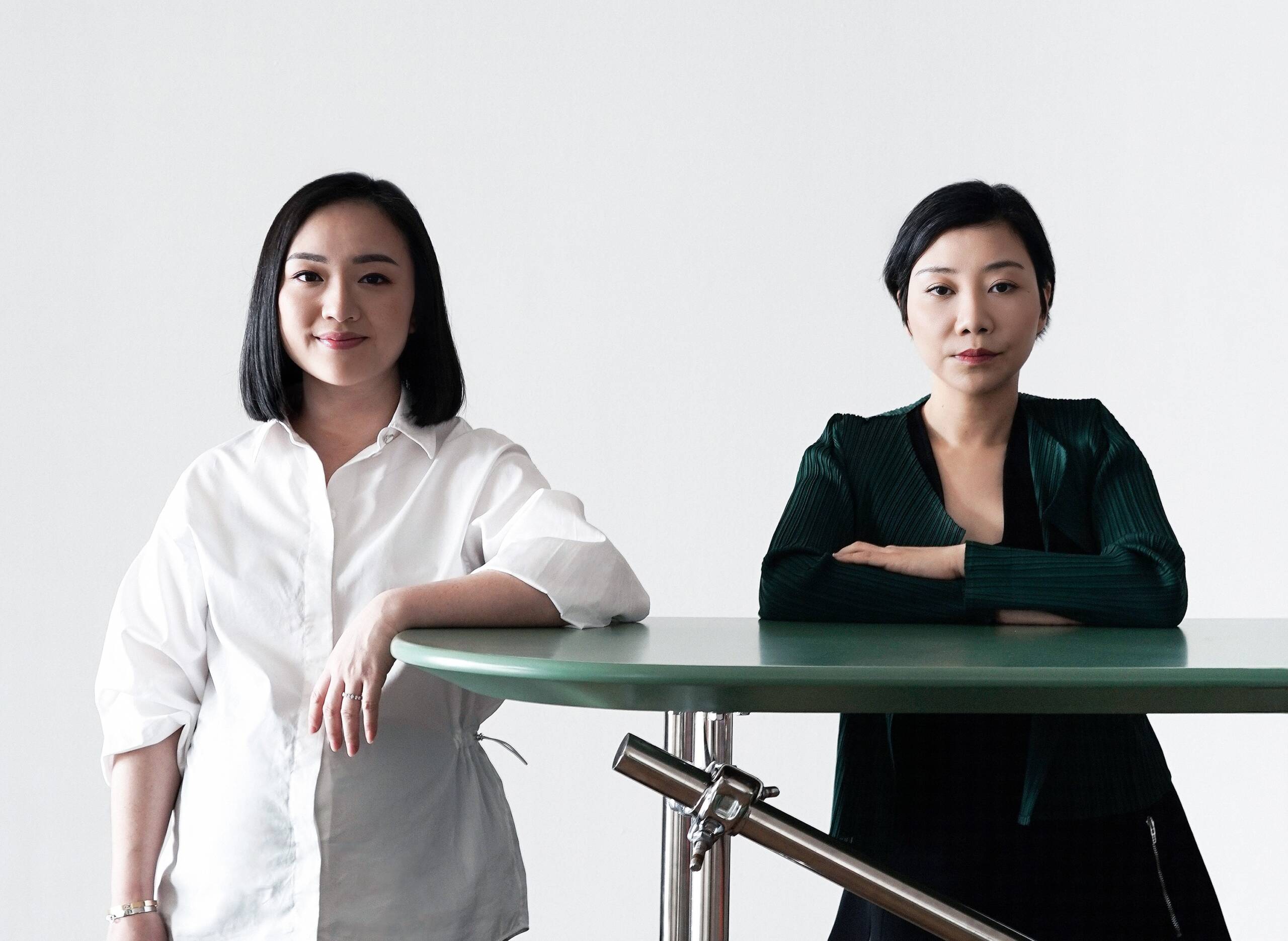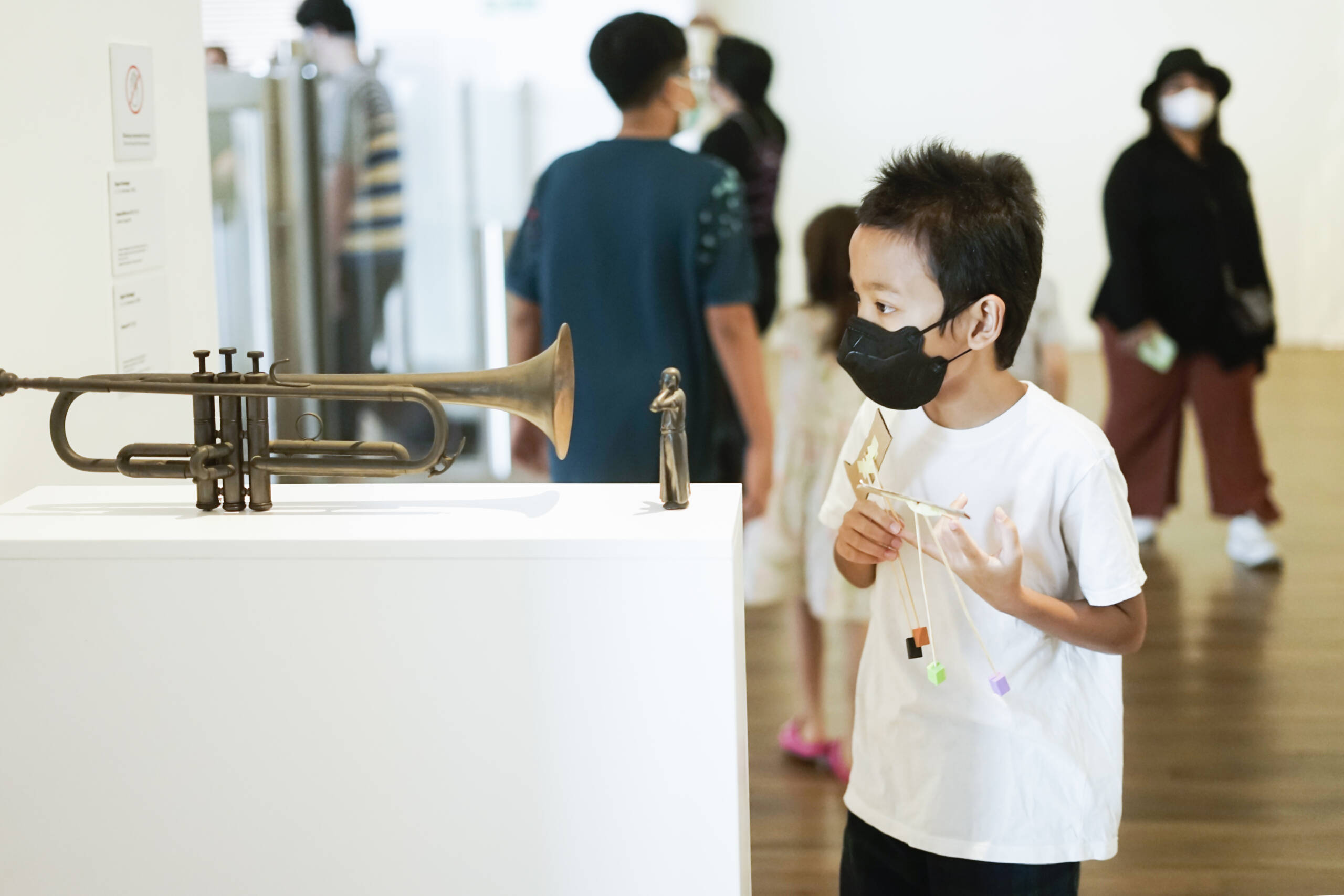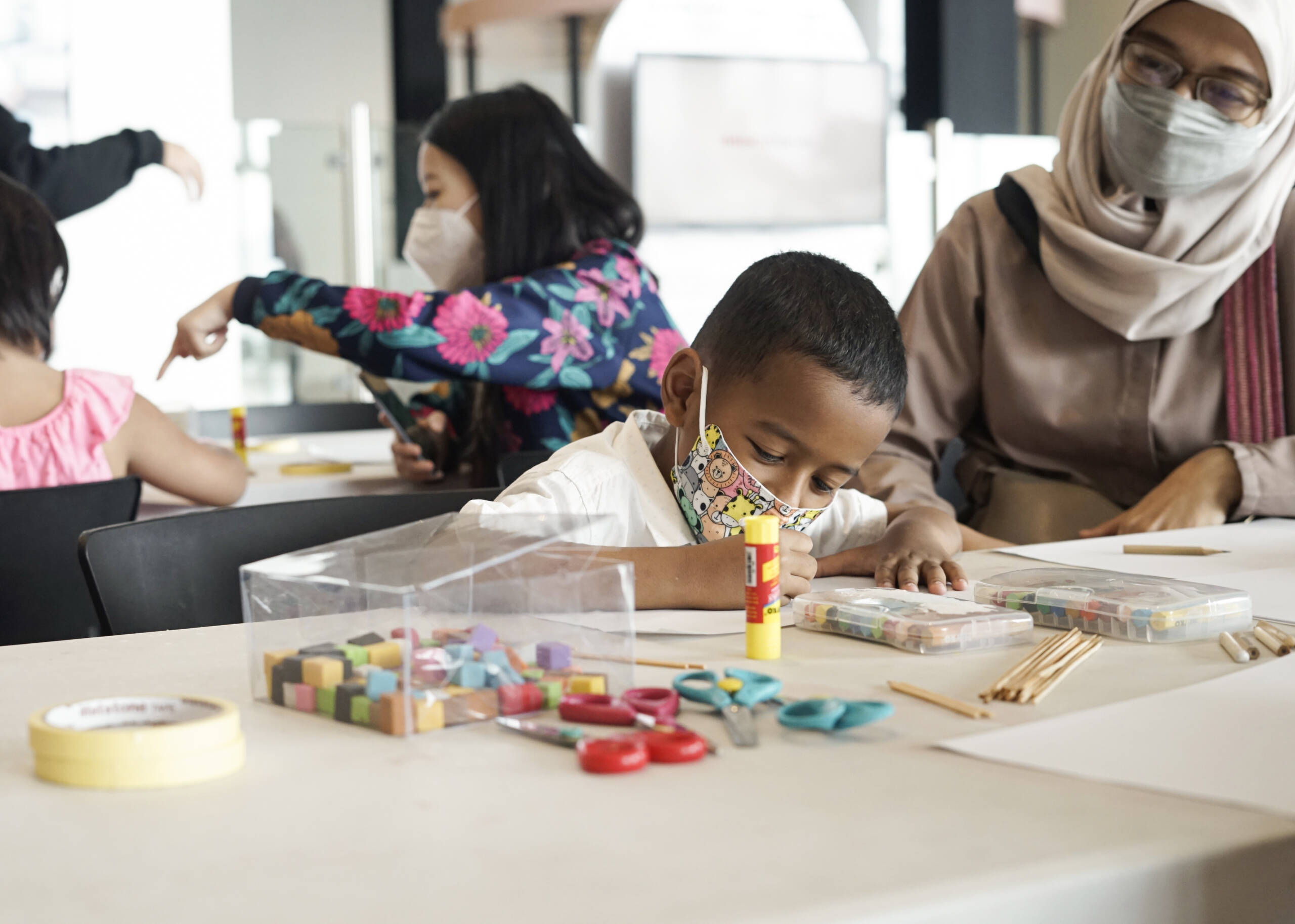
MACAN, in Jakarta, is Indonesia’s global standard contemporary art museum
Fenessa Adikoesoemo and Venus Lau are at the helm of MACAN, Indonesia’s premier contemporary art institution, founded by Fenessa’s father art collector, Haryanto Adikoesoemo. They speak with LUX Leaders & Philanthropists Editor Samantha Welsh, about their mission to foster cultural engagement across the ten nations of Southeast Asia, to further enhance MACAN’s reputation, and to elevate the perception of Indonesian contemporary art to the rest of the world.
LUX: Fenessa, why was your father’s focus drawn to collecting contemporary art?
Fenessa Adikoesoemo: He started collecting in 1992 after he visited a collector friend’s house in Bali. He saw how art can transform a home and made it feel more alive, so he began exploring the idea of acquiring art for his own house. He started with a lot of impressionist art. Unfortunately, when the financial crisis hit in 1997, he had to sell his beloved art collection.
When he started collecting again in 2001, the prices of impressionist works had gone through the roof. That was when he was introduced to contemporary art, and he fell in love with it. He feels that contemporary art is more in touch with our current times—a reflection of the world we live in today, capturing the essence of modern issues, societal trends, and cultural shifts.
On a more personal level, art has had a profound impact on my father’s life. It has served as a source of inspiration, fostering his own creativity and providing a sense of calm amidst life’s challenges. Engaging with art has taught him to appreciate different perspectives and embrace the beauty of diversity. He strongly believes that by engaging with art in general, including contemporary art, we can better understand and navigate the complexities of our world.
LUX: How is MACAN rolling out art education to extend the country’s cultural ecosystem?
FA: When we established the museum in 2017, we knew that we wanted to share art and make it more accessible to the public. We also knew that we wanted to focus on art education, especially for the younger generation. Our programs are rolled out to leverage the transformative power of art. By engaging with art, we encourage critical thinking and reflection, nurturing a community that values creativity and embraces the richness of cultural diversity.
Museum MACAN’s art education initiatives are designed to cultivate a cultural ecosystem that encourages mutual respect, understanding, and appreciation. Through our programs, we aim to promote dialogue and introspection, creating a space where diverse perspectives are welcomed and celebrated.
With the help of technology, we have reached educators from all over the country, giving them the resources and tools to teach art to their students and ensuring our programs can be easily integrated into the national curriculum. At year end 2023, the museum team was working with 736 schools and 3,162 educators from 23 provinces across Indonesia, and our programs have been accessed by more than 272,000 children and students.

Fenessa Adikoesoemo is the chairwoman of the museum and Venus Lau is the director.
LUX: Please tell us how this integrates with the Children’s Art Space and why early years’ engagement with the arts is so important?
FA: Museum MACAN’s commitment to promoting dialogue, creativity, and diversity of thought extends to our youngest visitors through tailored programs and interactive experiences. These values are integrated into the Children’s Art Space. We create a nurturing environment where children are encouraged to express themselves freely and think creatively, interacting with art in a different way.
For example, for our upcoming exhibition, CARE by Patricia Piccinini, which will open in May, our education team has come up with ideas for the Children’s Art Space that reflect on Patricia Piccinini’s ideas about care as a natural instinct that transcends species. Incorporating role play and spatial exploration to explore different love languages and acts of kindness, the experience aims to encourage curiosity, kindness, responsibility and acceptance, with an emphasis on kinship and kindness as an important element of care that can be nurtured in every child.
Early exposure to art is essential because it lays the foundation for a lifetime appreciation of creativity and cultural understanding. Art serves as a tool for exploration and self-discovery, empowering children to develop their unique voices and accept different viewpoints and can help them cultivate essential skills such as critical thinking, problem-solving, and empathy. By engaging with diverse artistic expressions, children learn to appreciate the beauty of diversity and recognize the value of collaboration and cooperation.
Follow LUX on instagram @luxthemagazine
LUX: What is your wish for MACAN’s legacy for Indonesia?
FA: I hope Museum MACAN can serve as a timeless beacon of cultural enrichment and inspiration, leaving a profound and lasting impact for the next generations, inspiring them to embrace art and help build the country’s cultural vibrancy and identity for years to come. I envision a legacy where the museum becomes an integral part of Indonesian society and plays a pivotal role in shaping the country’s cultural landscape, where it serves as a hub for cultural exchange, innovation, and collaboration, contributing to the country’s artistic development and global recognition.
LUX: Venus, how does MACAN support the national cultural discourse and help to shape Indonesia’s relationship with the rest of the world?
FA: Venus Lau: Several key initiatives are at play. Museum MACAN provides public access to contemporary art, including artists never exhibited in the country. For example, we will open Care, the first major solo exhibition in Indonesia by Australian artist Patricia Piccinini this May. In addition, with a diverse range of exhibition programs by local and international artists, we are building a cultural dialogue between artists, providing perspectives for understanding contemporary art within Indonesia and positioning Indonesian artists within the global art scene.
Museum MACAN also contributes significantly to art education, the institution’s mission. Education is not a one-way track: we deliver art knowledge through the programs, and at the same time, we learn from our audience and collaborators, who share with us their precious points of view that allow us to rethink art’s role in societies outside the box of the art world.
The educational aspect is vital for nurturing talents and encouraging critical thinking. The museum also serves as a space for dialogues and discussions on contemporary art and broader cultural (and social-political) issues. We host talks, workshops, and events that unite artists, curators, scholars, and the public. These dialogues and exchanges of ideas are essential in fostering a deeper understanding of Indonesia’s cultural identity and its relationship with the global art world.
LUX: What is the vision for MACAN’s programming across exhibitions and cultural activations?
VL: We aim to showcase diverse contemporary art practices to reflect the richness of artistic expressions and cultural perspectives. This diversity (perhaps our Indonesian archipaelago of 17,000 islands may be a good metaphor) allows visitors to encounter a huge variety of artworks, from traditional to experimental, and local to global perspectives. The museum presents inclusivity and celebrates the diversity of voices within the art world by presenting such exhibitions. Additionally, cultural activations at Museum MACAN are designed to encourage dialogue and interaction, inviting visitors to engage with art in different ways or even dimensions; for example, along with our exhibition by Patricia Piccinini, we are presenting a multi-sensory project at our Children’s space (all age groups are welcome!) that adds multiple dimensions of sense to the context of the exhibition.

Exhibition of Agus Suwage “The Theater of Me”
LUX: How are contemporary artists in Southeast Asia exploring issues that concern our future generations?
FL: I think I may speak from my personal experience instead of for all the artists in the region (or any region), as every artistic practice has its own individual epistemological and affective cosmos. From the dialogues I have had with the SE Asian artists, issues including Asian diaspora, archipelagic thinking, spectralities and technologies, ecologies, and non-binary thinking are terms brought up pretty often. There are also a lot of discussions on how globalisation, urbanisation, colonisation, and decolonisation reshape the ideas of modernity and traditions. There are also practices of artists in the region exploring the concepts of non-Western futurism and technology (and its mythologies), which are themes rethinking the ideas of temporality and futures.
Read more: Magnus Renfrew on Singapore’s Art SG Fair
LUX: How will MACAN continue facilitating cross-cultural dialogues through contemporary art across Asia?
VL: Through targeted exhibition and education programs that initiate multi-disciplinary diversities, we encourage collaborations and foster cultural exchange. We are constantly initiating educational programs—organising workshops, talks, and digital programs to engage with our audience, locally and internationally. Through these efforts, we aim to actively contribute to a more form of connectivity and culturally enriched contemporary art landscape across Asia.

Agus Suwage is one of Indonesia’s leading artists whose practice emerged in the lead up to the tumultuous social and political changes in Indonesia in the mid-1990s
LUX: Finally, what influence does Indonesia have at the regional level in enhancing the cultural emancipation of the Global South?
VL: Speaking from our museum’s perspective, through our initiatives at Museum MACAN, we embrace archipelagic thinking and engage with diverse interests among the new generations. The museum’s approach reflects Indonesia’s rich cultural diversity, serving as a model for celebrating traditions and fostering creative expression.
We’ve learned the importance of inclusivity and dialogue from the museum’s audience. By showcasing diverse contemporary art and facilitating cross-cultural conversations, the Museum could inspire similar regional initiatives. This approach empowers the Global South to assert its cultural narratives and perspectives on the global stage, contributing to a more equitable and enriched cultural landscape.








